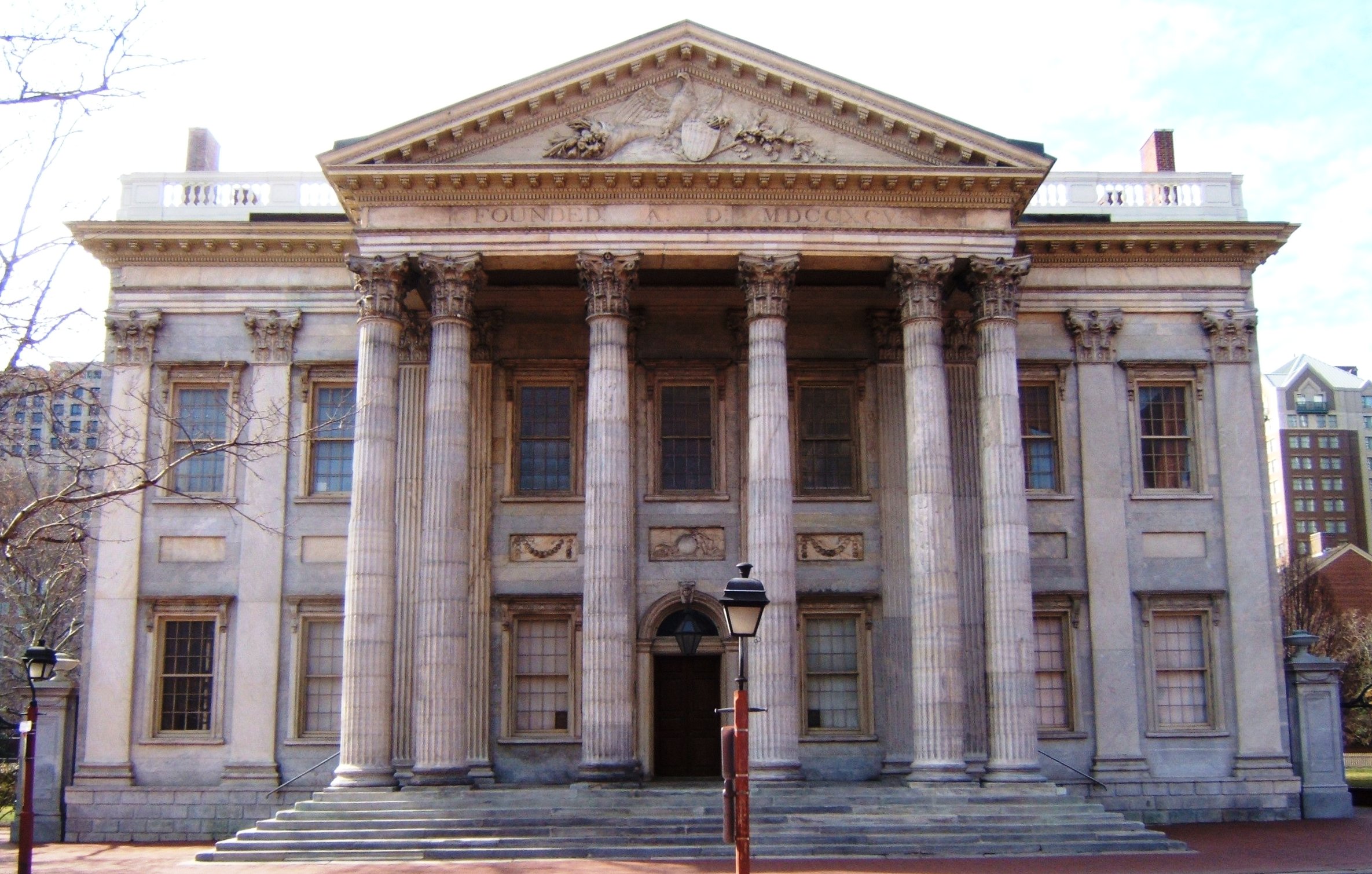|
Depository Institutions Deregulation And Monetary Control Act
The Depository Institutions Deregulation and Monetary Control Act of 1980 (, ) (often abbreviated DIDMCA or MCA) is a United States federal financial statute passed in 1980 and signed by President Jimmy Carter on March 31. It gave the Federal Reserve greater control over non-member banks. * It forced all banks to abide by the Fed's rules. * It relaxed the rules under which national banks could merge. * It removed the power of the Federal Reserve Board of Governors under the Glass–Steagall Act to use Regulation Q to set maximum interest rates for any deposit accounts other than demand deposit accounts (with a six-year phase-out). * It allowed Negotiable Order of Withdrawal accounts to be offered nationwide.Gilbert, Alton. "Requiem for Regulation Q: What It Did and Why It Passed Away", Federal Reserve Bank of St. Louis: pp. 31-33/ref> * It raised the deposit insurance of US banks and credit unions from $40,000 to $100,000. * It allowed credit unions and savings and loans to offe ... [...More Info...] [...Related Items...] OR: [Wikipedia] [Google] [Baidu] |
Banks And Banking
A bank is a financial institution that accepts deposits from the public and creates a demand deposit while simultaneously making loans. Lending activities can be directly performed by the bank or indirectly through capital markets. Because banks play an important role in financial stability and the economy of a country, most jurisdictions exercise a high degree of regulation over banks. Most countries have institutionalized a system known as fractional reserve banking, under which banks hold liquid assets equal to only a portion of their current liabilities. In addition to other regulations intended to ensure liquidity, banks are generally subject to minimum capital requirements based on an international set of capital standards, the Basel Accords. Banking in its modern sense evolved in the fourteenth century in the prosperous cities of Renaissance Italy but in many ways functioned as a continuation of ideas and concepts of credit and lending that had their roots in the anc ... [...More Info...] [...Related Items...] OR: [Wikipedia] [Google] [Baidu] |
Credit Union
A credit union, a type of financial institution similar to a commercial bank, is a member-owned nonprofit financial cooperative. Credit unions generally provide services to members similar to retail banks, including deposit accounts, provision of credit, and other financial services. In several African countries, credit unions are commonly referred to as SACCOs (Savings and Credit Co-Operative Societies). Worldwide, credit union systems vary significantly in their total assets and average institution asset size, ranging from volunteer operations with a handful of members to institutions with hundreds of thousands of members and assets worth billions of US dollars. In 2018, the number of members in credit unions worldwide was 274 million, with nearly 40 million members having been added since 2016. Leading up to the financial crisis of 2007–2008, commercial banks engaged in approximately five times more subprime lending relative to credit unions and were two and a half ... [...More Info...] [...Related Items...] OR: [Wikipedia] [Google] [Baidu] |
United States Federal Banking Legislation
Banking in the United States began by the 1780s along with the country's founding and has developed into highly influential and complex system of banking and financial services. Anchored by New York City and Wall Street, it is centered on various financial services namely private banking, asset management, and deposit security. The beginnings of the banking industry can be traced to 1780 when the Bank of Pennsylvania was founded to fund the American Revolutionary War. After merchants in the Thirteen Colonies needed a currency as a medium of exchange, the Bank of North America was opened to facilitate more advanced financial transactions. As of 2018, the largest banks in the United States were JPMorgan Chase, Bank of America, Wells Fargo, Citigroup, and Goldman Sachs. It is estimated that banking assets were equal to 56 percent of the U.S. economy. As of September 8, 2021, there were 4,951 FDIC insured commercial banks and savings institutions in the U.S. History Merch ... [...More Info...] [...Related Items...] OR: [Wikipedia] [Google] [Baidu] |
Federal Reserve System
The Federal Reserve System (often shortened to the Federal Reserve, or simply the Fed) is the central banking system of the United States of America. It was created on December 23, 1913, with the enactment of the Federal Reserve Act, after a series of financial panics (particularly the panic of 1907) led to the desire for central control of the monetary system in order to alleviate financial crises. Over the years, events such as the Great Depression in the 1930s and the Great Recession during the 2000s have led to the expansion of the roles and responsibilities of the Federal Reserve System. Congress established three key objectives for monetary policy in the Federal Reserve Act: maximizing employment, stabilizing prices, and moderating long-term interest rates. The first two objectives are sometimes referred to as the Federal Reserve's dual mandate. Its duties have expanded over the years, and currently also include supervising and regulating banks, maintaining the sta ... [...More Info...] [...Related Items...] OR: [Wikipedia] [Google] [Baidu] |
1980 In Law
__NOTOC__ Year 198 (CXCVIII) was a common year starting on Sunday (link will display the full calendar) of the Julian calendar. At the time, it was known as the Year of the Consulship of Sergius and Gallus (or, less frequently, year 951 ''Ab urbe condita''). The denomination 198 for this year has been used since the early medieval period, when the Anno Domini calendar era became the prevalent method in Europe for naming years. Events By place Roman Empire *January 28 **Publius Septimius Geta, son of Septimius Severus, receives the title of Caesar. **Caracalla, son of Septimius Severus, is given the title of Augustus. China *Winter – Battle of Xiapi: The allied armies led by Cao Cao and Liu Bei defeat Lü Bu; afterward Cao Cao has him executed. By topic Religion * Marcus I succeeds Olympianus as Patriarch of Constantinople (until 211). Births * Lu Kai (or Jingfeng), Chinese official and general (d. 269) * Quan Cong, Chinese general and advisor (d. 2 ... [...More Info...] [...Related Items...] OR: [Wikipedia] [Google] [Baidu] |
Santa Barbara, California
Santa Barbara ( es, Santa Bárbara, meaning "Saint Barbara") is a coastal city in Santa Barbara County, California, of which it is also the county seat. Situated on a south-facing section of coastline, the longest such section on the West Coast of the United States, the city lies between the steeply rising Santa Ynez Mountains and the Pacific Ocean. Santa Barbara's climate is often described as Mediterranean, and the city has been dubbed "The American Riviera". According to the 2020 U.S. Census, the city's population was 88,665. In addition to being a popular tourist and resort destination, the city has a diverse economy that includes a large service sector, education, technology, health care, finance, agriculture, manufacturing, and local government. In 2004, the service sector accounted for 35% of local employment. Education in particular is well represented, with four institutions of higher learning nearby: the University of California, Santa Barbara, Santa Barbara City ... [...More Info...] [...Related Items...] OR: [Wikipedia] [Google] [Baidu] |
Unintended Consequences
In the social sciences, unintended consequences (sometimes unanticipated consequences or unforeseen consequences) are outcomes of a purposeful action that are not intended or foreseen. The term was popularised in the twentieth century by American sociologist Robert K. Merton and expanded by economist Thomas Sowell and psychologist Stuart Vyse.Robert K. Merton, Versatile Sociologist and Father of the Focus Group, Dies at 92 Michael T. Kaufman, '''' Unintended consequences can be grouped into three types: * ''Unexpected benefit' ... [...More Info...] [...Related Items...] OR: [Wikipedia] [Google] [Baidu] |
The American Prospect
''The American Prospect'' is a daily online and bimonthly print American political and public policy magazine dedicated to American modern liberalism and progressivism. Based in Washington, D.C., ''The American Prospect'' says it "is devoted to promoting informed discussion on public policy from a progressive perspective." Its motto is "Ideas, Politics, and Power". History The magazine, initially called ''The Liberal Prospect'', was founded in 1990 by Robert Kuttner, Robert Reich, and Paul Starr as a response to the perceived ascendancy of conservatism in the 1980s. Kuttner and Starr currently serve as co-editors. As of June 2019, David Dayen serves as executive editor and Ellen J. Meany serves as Publisher. Current editors include Managing Editor Ryan Cooper, Co-founder and Co-editor Robert Kuttner, Editor-at-Large Harold Meyerson, Co-founder and Co-editor Paul Starr, and Deputy Editor Gabrielle Gurley. Staff writers and contributors have included Gabriel Arana, Steve ... [...More Info...] [...Related Items...] OR: [Wikipedia] [Google] [Baidu] |
Competitive Enterprise Institute
The Competitive Enterprise Institute (CEI) is a non-profit libertarian think tank founded by the political writer Fred L. Smith Jr. on March 9, 1984, in Washington, D.C., to advance principles of limited government, free enterprise, and individual liberty. CEI focuses on a number of regulatory policy issues, including business and finance, labor, technology and telecommunications, transportation, food and drug regulation, and energy and environment in which they have promoted climate change denial. Kent Lassman is the current President and CEO. According to the ''2017 Global Go To Think Tank Index Report'' (Think Tanks and Civil Societies Program, University of Pennsylvania), CEI was number 59 (of 90) in the "Top Think Tanks in the United States". Other "Top Think Tank" rankings include #43 (of 65) of Environment Think Tanks and #47 (of 75) for Best Advocacy Campaign. Policy areas Energy and environment Academic research has identified CEI as one of the Conservative think t ... [...More Info...] [...Related Items...] OR: [Wikipedia] [Google] [Baidu] |
Checkable Deposit
A transaction account, also called a checking account, chequing account, current account, demand deposit account, or share draft account at credit unions, is a deposit account held at a bank or other financial institution. It is available to the account owner "on demand" and is available for frequent and immediate access by the account owner or to others as the account owner may direct. Access may be in a variety of ways, such as cash withdrawals, use of debit cards, cheques (checks) and electronic transfer. In economic terms, the funds held in a transaction account are regarded as liquid funds. In accounting terms, they are considered as cash. Transaction accounts are known by a variety of descriptions, including a current account (British English), chequing account or checking account when held by a bank, share draft account when held by a credit union in North America. In the United Kingdom, Hong Kong, India and a number of other countries, they are commonly called current ... [...More Info...] [...Related Items...] OR: [Wikipedia] [Google] [Baidu] |




